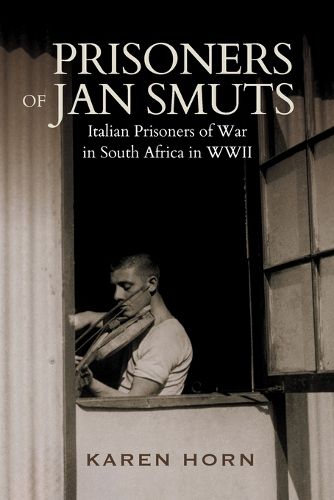Readings Newsletter
Become a Readings Member to make your shopping experience even easier.
Sign in or sign up for free!
You’re not far away from qualifying for FREE standard shipping within Australia
You’ve qualified for FREE standard shipping within Australia
The cart is loading…






This title is printed to order. This book may have been self-published. If so, we cannot guarantee the quality of the content. In the main most books will have gone through the editing process however some may not. We therefore suggest that you be aware of this before ordering this book. If in doubt check either the author or publisher’s details as we are unable to accept any returns unless they are faulty. Please contact us if you have any questions.
Equally skilled in a variety of trades other than in the art of love, the Italian prisoners of war (POWs) who were incarcerated in South Africa during the Second World War are a source of great fascination to this day. Who were these men? And what made some of them attempt dramatic escapes, while others wanted to stay behind after the war?
The first Italian POWs arrived in the Union of South Africa in early 1941, most of them being held in Zonderwater Camp outside Cullinan or in work camps across the country. The government of Jan Smuts saw them as a source of cheap labour that would contribute to harvesting schemes, road-building projects such as the old Du Toit's Kloof Pass between Paarl and Worcester and even to prickly-pear eradication schemes.
Prisoners of Jan Smuts recounts the stories of survival and shenanigans of the Italian POWs in the Union through the eyes of five prisoners who had documented their experiences in memoirs and letters. While many POWs seemed to appreciate the opportunities to gain new skills, others clung to the Fascist ideas they had grown up with and refused to work.
Many opted to remain in South Africa once the war had ended, forging quite a legacy. These included sculptor Edoardo Villa, who left an important mark in the local and international art world, and businessman Aurelio Gatti, who built an ice-cream empire whose gelato was to delight generations of South Africans.
$9.00 standard shipping within Australia
FREE standard shipping within Australia for orders over $100.00
Express & International shipping calculated at checkout
This title is printed to order. This book may have been self-published. If so, we cannot guarantee the quality of the content. In the main most books will have gone through the editing process however some may not. We therefore suggest that you be aware of this before ordering this book. If in doubt check either the author or publisher’s details as we are unable to accept any returns unless they are faulty. Please contact us if you have any questions.
Equally skilled in a variety of trades other than in the art of love, the Italian prisoners of war (POWs) who were incarcerated in South Africa during the Second World War are a source of great fascination to this day. Who were these men? And what made some of them attempt dramatic escapes, while others wanted to stay behind after the war?
The first Italian POWs arrived in the Union of South Africa in early 1941, most of them being held in Zonderwater Camp outside Cullinan or in work camps across the country. The government of Jan Smuts saw them as a source of cheap labour that would contribute to harvesting schemes, road-building projects such as the old Du Toit's Kloof Pass between Paarl and Worcester and even to prickly-pear eradication schemes.
Prisoners of Jan Smuts recounts the stories of survival and shenanigans of the Italian POWs in the Union through the eyes of five prisoners who had documented their experiences in memoirs and letters. While many POWs seemed to appreciate the opportunities to gain new skills, others clung to the Fascist ideas they had grown up with and refused to work.
Many opted to remain in South Africa once the war had ended, forging quite a legacy. These included sculptor Edoardo Villa, who left an important mark in the local and international art world, and businessman Aurelio Gatti, who built an ice-cream empire whose gelato was to delight generations of South Africans.